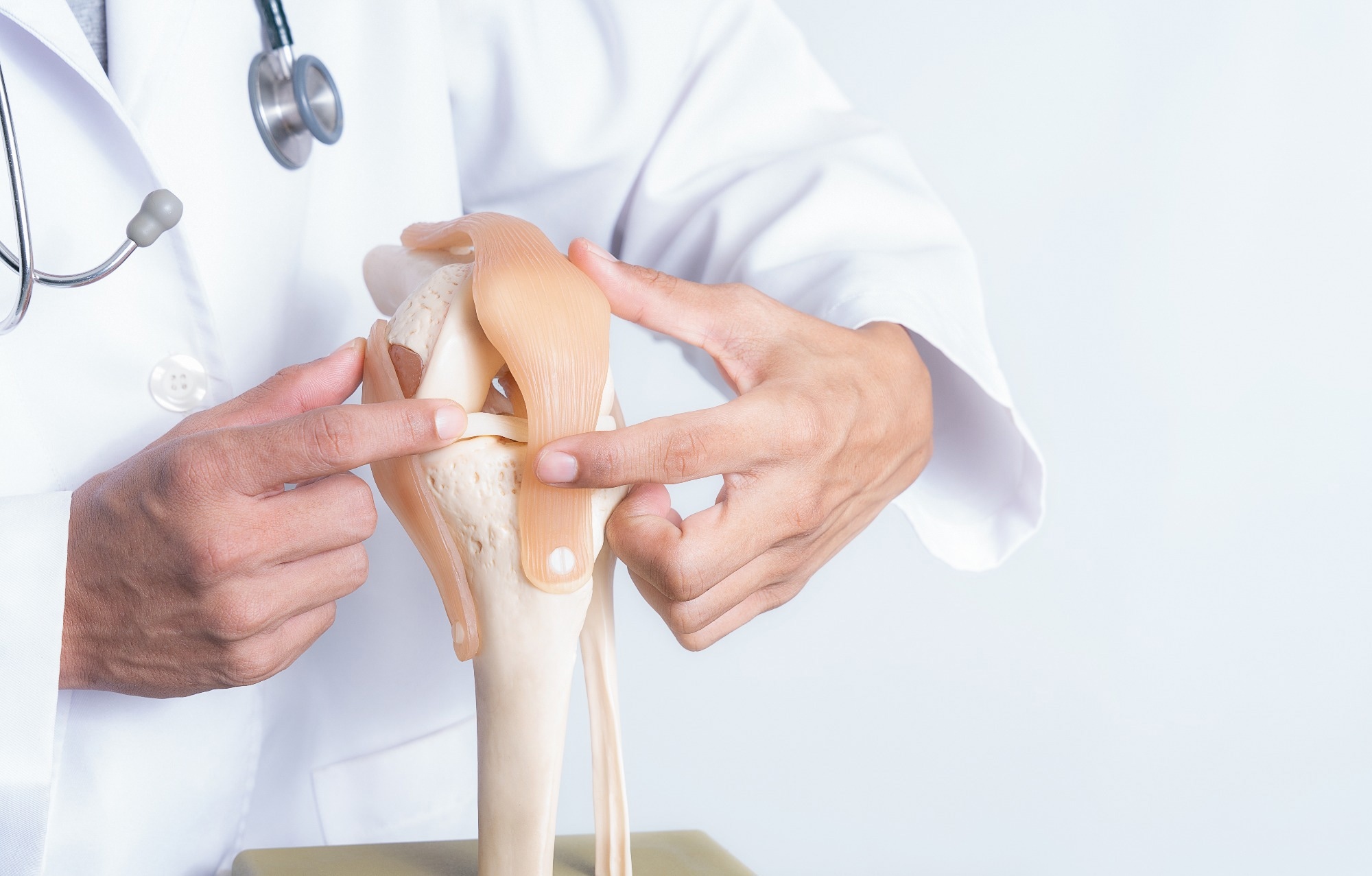A recent article in Engineering describes the development of a protein-based nanocomposite hydrogel designed to deliver two therapeutic agents—dexamethasone (Dex) and kartogenin (KGN)—to support cartilage repair. The hydrogel is engineered to modulate immune responses and promote the formation of cartilage tissue through controlled drug release.

Image Credit: nuiza11/Shutterstock.com
Background
Cartilage has a limited ability to repair itself due to its avascular nature, which restricts nutrient flow and cell migration. Various scaffold materials, including natural polymers and composites, have been tested for cartilage repair. However, many of these face limitations such as poor mechanical strength, weak cell signaling, and inconsistent drug delivery.
Hydrogels are promising in this context because they are hydrophilic, biodegradable, and can mimic the properties of natural tissue. Designing hydrogels that coordinate immune regulation and tissue regeneration, however, remains a complex challenge.
Dexamethasone is a corticosteroid with strong anti-inflammatory effects. It can shift macrophages toward an M2 phenotype, which supports tissue repair. Kartogenin is a small molecule known to stimulate mesenchymal stem cells (MSCs) to differentiate into chondrocytes, enhancing cartilage formation. Combining both agents in a single hydrogel aims to first reduce inflammation and then encourage cartilage regeneration.
The Current Study
Researchers created a silk fibroin-based nanocomposite hydrogel loaded with Dex and KGN. KGN was covalently linked to silk proteins to form nanospheres (SPNs) that release the drug over time. Dex was incorporated non-covalently via hydrogen bonding with the silk matrix, forming a Dex-HLC complex intended for rapid release.
The hydrogel network was stabilized using enzymatic crosslinking with transglutaminase, which promoted covalent bonding between amino acid residues in the silk fibroin. This structure allowed for staged drug release: Dex would be released early to manage inflammation, and KGN would be released gradually during the tissue regeneration phase.
The hydrogel’s physical and chemical properties—such as strength, degradation rate, and drug release behavior—were assessed through spectroscopy, degradation studies, and release tests. Cytocompatibility was evaluated using cultures of MSCs and macrophages to monitor adhesion, growth, and differentiation.
An in vivo rabbit model of cartilage defect was used to test the hydrogel’s repair performance. After implantation, tissue samples were evaluated through histological staining (H&E, Safranin O), immunohistochemistry for inflammation and cartilage markers, and micro-CT imaging to assess cartilage and bone formation.
Results and Discussion
The hydrogel formed a stable and elastic structure with mechanical properties similar to native cartilage. It degraded at a rate aligned with typical cartilage healing timelines. In early-stage testing, Dex was released quickly and reduced inflammation, as shown by lower levels of cytokines such as TNF-α and IL-6. Macrophage analysis showed a shift from the M1 (inflammatory) to M2 (anti-inflammatory) phenotype after Dex exposure.
KGN was released over a longer period, supporting the differentiation of MSCs into chondrocytes. This was confirmed by increased expression of markers like type II collagen, SOX-9, and aggrecan. At the same time, expression of hypertrophy-associated markers like RUNX2 decreased, while RUNX1 expression increased, indicating stable chondrogenic differentiation and reduced risk of cartilage overgrowth.
In the rabbit model, defects treated with the hydrogel showed significant formation of hyaline-like cartilage, with organized extracellular matrix and tissue structures resembling native cartilage. These regions showed higher levels of cartilage matrix components and new bone formation compared to control groups. Immunohistochemical staining revealed reduced inflammatory signaling and increased collagen type II levels, confirming tissue regeneration with limited inflammation and hypertrophy.
Download your PDF copy now!
Conclusion
This study describes a dual-drug nanocomposite hydrogel for cartilage repair that delivers Dex for early inflammation control and KGN for long-term cartilage regeneration. The material showed favorable mechanical performance, cell compatibility, and regenerative effects in a rabbit cartilage defect model. The combination of immune modulation and support for chondrogenesis represents a comprehensive strategy for tissue engineering.
While initial results are encouraging, further research is needed to refine drug delivery profiles, evaluate long-term outcomes, and confirm safety in larger animal models. This approach highlights the potential of responsive hydrogel systems in addressing challenges in cartilage repair and osteoarthritis treatment.
Journal Reference
Lei, H., Fan, D. (2025). Dual drug delivery nanocomposite hydrogel for cartilage repair: immunomodulation and chondrogenesis. Engineering. DOI: 10.1016/j.eng.2025.05.010, https://www.sciencedirect.com/science/article/pii/S2095809925002875?via%3Dihub